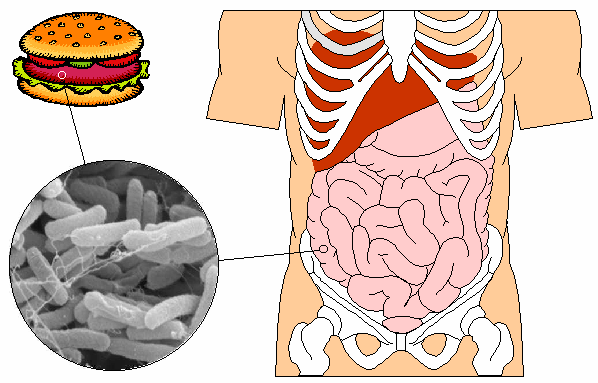
Many varieties (or strains) of E. coli are harmless. But some strains cause diseases, such as the E. coli food poisoning that we study. Strains of E. coli associated with this food poisoning are referred to as enterohaemorrhagic E. coli (EHEC for short) because the symptoms include haemorrhage from the digestive tract.
In North America, E. coli food poisoning is commonly called hamburger disease because it is often acquired by eating poorly-cooked minced beef. When contaminated beef is ground up, the bacteria are spread throughout the meat, and are killed only by thorough cooking. It is estimated that as few as 10 surviving bacteria will establish an infection.

(E. coli photograph courtesy Shirley Owens, Michigan State University)
The result of an infection may be as little as a case of diarrhea, possibly with blood in the stools (haemorrhagic colitis). From 5 to 10% of people infected develop a serious condition known as haemolytic uraemic syndrome (HUS), in which the kidneys are damaged. HUS can lead to permanent kidney damage, requiring long-term dialysis treatment. Some patients die, with the very young and very old being most at risk.
Although there are potential therapies in clinical trials, the current accepted practice is simply supportive therapy for the patient. There is a need for new therapies, which we are addressing by studying the molecular basis of this disease. What distinguishes EHEC from harmless E. coli is its production of toxins called Shiga-like toxins or verotoxins. So we are studying the structure of these toxins and the molecular basis of their action on human cells.
|
Up Back to top |
Next AB toxins |